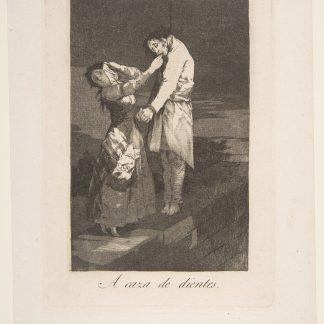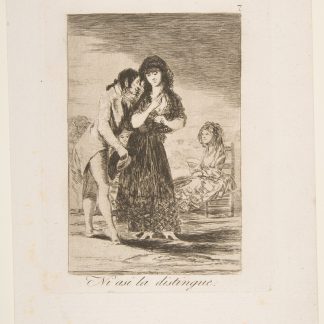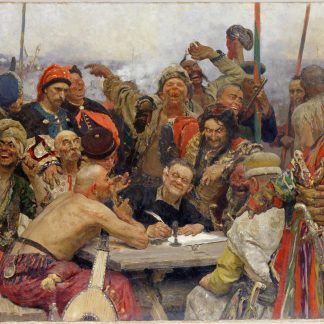Description
Reply of the Zaporozhian Cossacks depicts a supposedly historical tableau, set in 1676, and based on the legend of Cossacks sending an insulting reply to an ultimatum from the Sultan of the Ottoman Empire, Mehmed IV.
According to the story, the Zaporozhian Cossacks (from “beyond the rapids”, Ukrainian: za porohamy), inhabiting the lands around the lower Dnieper River in Ukraine, had defeated Ottoman Empire forces in battle. However, despite his army having suffered this loss to them, Mehmed demanded that the Cossacks submit to Ottoman rule. The Cossacks, led by Ivan Sirko, replied in a characteristic manner; they wrote a letter, replete with insults and profanities. The painting exhibits the Cossacks’ pleasure at striving to come up with ever more base vulgarities.
In the 19th century, the historical Zaporozhian Cossacks were sometimes the subject of picturesque tales demonstrating admiration of their primitive vitality and contemptuous disregard for authority (in marked contrast to the more civilized subjects of the authoritarian Russian state).[5] Whether the incident portrayed actually happened or is just another of these tales is not known, but no concrete or reliable evidence exists that it did happen,[5] although the question remains disputed.
U.S.-based Slavic and Eastern European historian Daniel C. Waugh (1978) observed: “The correspondence of the sultan with the Chyhyryn Cossacks had undergone a textual transformation sometime in the eighteenth century whereby the Chyhyryntsy became the Zaporozhians and the controlled satire of the reply was debased into vulgarity. In this vulgar version, the Cossack correspondence spread quite widely in the nineteenth century. (…) The best-known reflection of the nineteenth-century popularity of the Cossack correspondence is the famous painting by II’ia Repin showing the uproarious Zaporozhians penning their reply.’
Bibliography
Reply of the Zaporozhian Cossacks, https://en.wikipedia.org/w/index.php?title=Reply_of_the_Zaporozhian_Cossacks&oldid=1103244218 (last visited Aug. 10, 2022).






